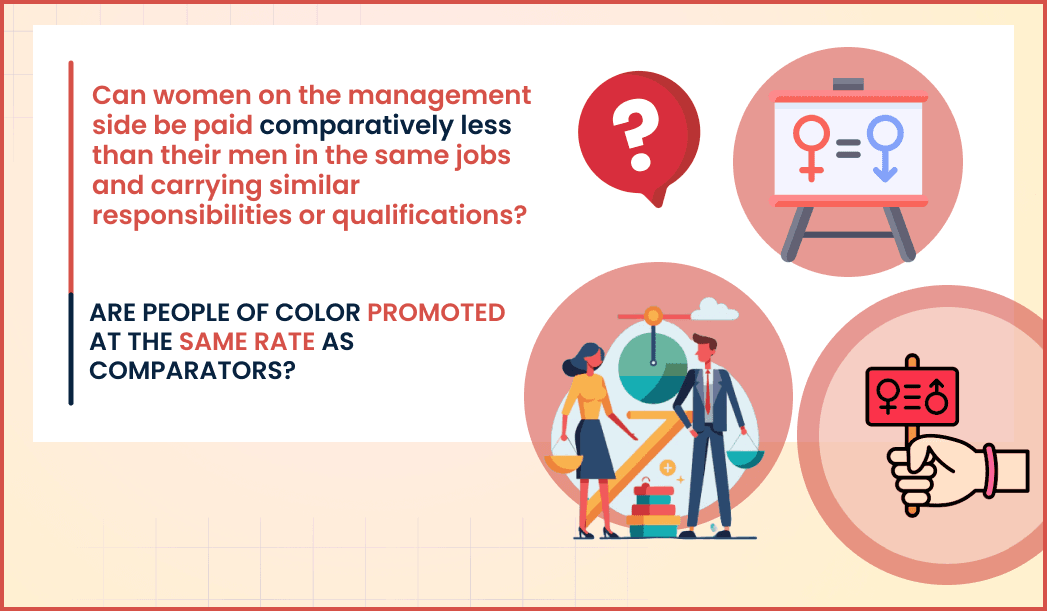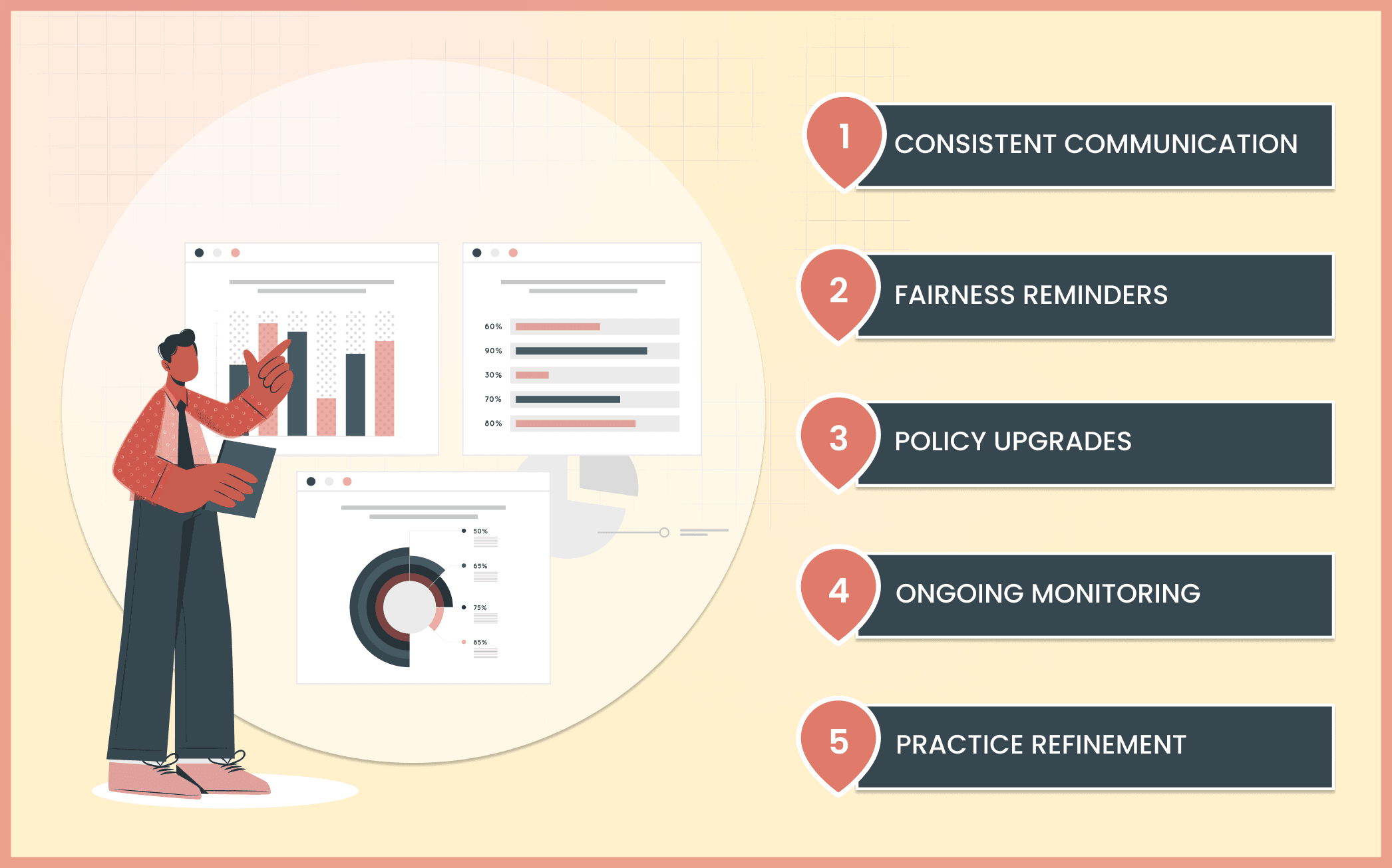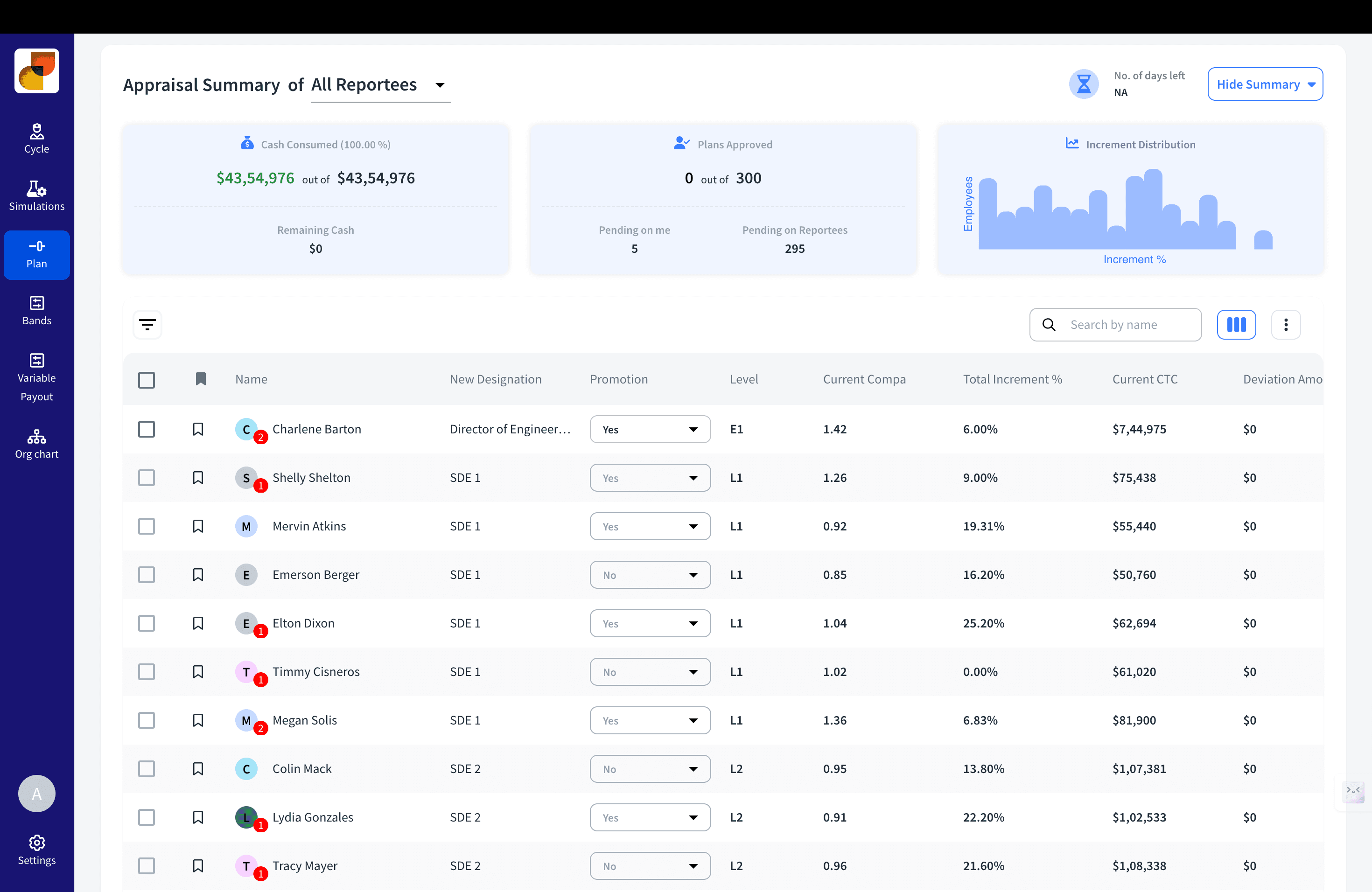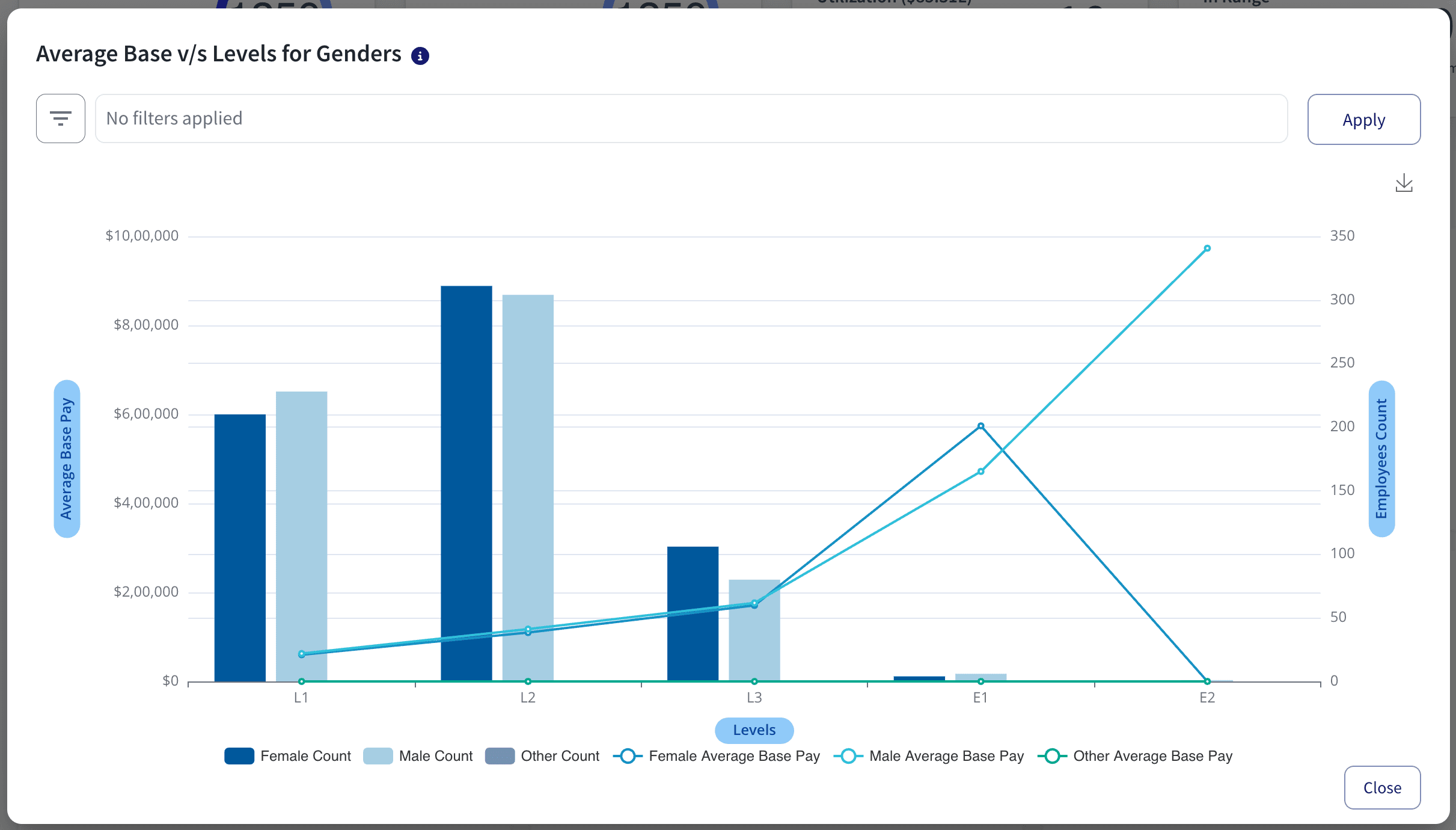
The strongest strand of focus in building an inclusive, diverse, and fair workplace is that of pay equity among companies. According to a study by the World Economic Forum, in order for this gap to be bridged globally at the current rate of progression, it would take 132 years, with pay inequality being one of the drivers.
Whereas, McKinsey reveals additional evidence- companies in the top quartile for gender diversity on executive teams are 25% more likely to have the highest profitability. This and other numbers only reiterate the reasons why HR professionals and CHROs must add pay equity to the list of strategic priorities, not just some item to comply with.
Let's look into pay disparities, how to address them, how to conduct a pay equity audit, and derive the benefits of equitable pay practices.
Attaining pay equity requirements first begins with knowing where disparities lie within an organisation. Inequities in compensation can take many forms-most commonly in salary, bonuses, and benefits. Most of these forms of compensation have been outdated for decades owing to historical pay structures and unconscious bias within processes designed to set salaries.
Some additional areas of review: hiring, promotion, and performance ratings.
Are women or minority groups offered lower starting salaries consistently? Are promotions handed out fairly?
Performance reviews also might suggest biases if certain groups receive lower ratings but the contributions were comparable.
Some of these are the questions that can help to begin to narrow down the root causes of pay inequality and strategies for fixing it.
In essence, a pay equity audit is simply an organised review process at your place of work on compensation. The audit serves as an important diagnostic tool in pointing out differences and drivers of pay inequity. In simple words, a pay equity audit compares the salaries of comparators performing the same job while all factors of productivity, education, and experience are held constant.
It goes beyond just peering into some numbers and closely analyses your company's compensation policies, its hiring practices, and performance review processes.
You would gather granular data regarding the demographics of your employees, job titles, salaries, bonuses, and promotions in a pay equity audit. This information will enable you to run analyses to determine whether, in fact, there is any statistically significant difference in compensation between groups.

The pay equity audit would not only identify the pay gaps but actually reveal why these gaps exist. It may be that a lack of standardized salary bands is entering some inconsistent pay offers, or perhaps different departments are practising inequitable promotion practices. Such issues being discovered allow you to take remedial action in closing the pay gaps and, more importantly, to establish fair practices for the future.
Timing is everything when it comes to conducting a pay equity audit. Many organizations wait until they are prompted by legal requirements or external pressure, but proactive audits are far more effective. The best time to conduct a pay equity audit is before significant events such as mergers, acquisitions, or company-wide compensation adjustments. These events can intensify existing disparities, making it essential to ensure that any changes are equitable from the outset.
Audits also become advisable at times of major hiring initiatives or once new compensation strategies have recently been introduced. At such points, they afford the chance to step back and review pay structures to ensure fairness for both new and old employees.
Pay equity audits can be conducted periodically to prevent future issues and thereby make a compensation culture fair and transparent.
Pay equity is not only the law but also a business imperative. Employees increasingly have expectations about compensation in today's competitive job market. Failure to address pay disparities feeds disengagement, high turnover, and damage to your employer brand.
The studies show that organizations with a good track record on pay equity have higher employee satisfaction and morale and higher retention scores. Those who feel highly paid employees are more likely to remain within the firm longer and lower the need for turn over or recruitment.
Furthermore, equitable remuneration practice strengthens diversity and inclusion practice. As such, with equal pay to all, regardless of gender, race, or background, abiding by the legal landscape of pay equity creates a feeling of inclusiveness to most employees who are valued. This can also aid in making more effective decisions and innovative performance because diverse teams are likely to present new perspectives and solutions.
Pay inequalities disproportionately impact women, people of color, and other historically underrepresented groups. According to the U.S. Census Bureau, for each dollar earned by men, women collect a paltry 82 cents; the gap is steeper for women of color. This labor still bears long-term effects, including career advancement, retirement savings, and overall financial security.
If pay inequities are left unchecked, they reduce confidence and loyalty in the workplace. Undervalued employees would be less likely to produce and become motivated and might look for opportunities elsewhere. Redressing these issues presents an opportunity for HR professionals and CHROs to build a more equitable, motivated, and productive workforce.
To implement a successful pay equity initiative, companies should start by securing access to compensation data and conducting a detailed compensation analysis.
It requires serious commitment from the company leadership. HR professionals must now persuade and drive this cause as a strategic priority by showing how fair compensation practices are good for the workforce and the bottom line of the company.
After disparities are identified, employees typically engage in conducting pay equity audits, data analysis, and action plan development.
Equipped with effective tools, the team can evaluate compensation decisions to ensure they are aligned with the organization’s compensation philosophy and principles of fairness.
Conducting regular pay equity audits, which account for legitimate business factors like job level, market rates, and organizational performance, is crucial. These audits reveal insights into equitable pay practices, helping companies make adjustments that foster a transparent and trustworthy work environment while positively impacting business outcomes.

It is overwhelming and versatile-the pay equity benefits. Pay practices are no longer just beneficial for employee morale and retention. Equitable pay practice advantages give an organization a competitive edge when it seeks out the best talent.
Increasingly, today's job seeker is choosing to work for companies that demonstrate fairness, diversity, and inclusion- free of equity issues.
In addition, pay equity will also protect your company against legal risks. Pay discrimination is illegal in most parts of the world; companies that fail to recognize pay disparities may suffer costly lawsuits, reputational damages, and regulatory penalties. Paying proactive attention to equity creates a more just workplace but guards your organization against legal challenges.
It is also crucial in promoting a healthy organizational culture. In this aspect, there is a fair degree of trust that if the employees can ensure that everyone gets what they deserve, they are valued and motivated in their work. This leads to more levels of engagement, resulting in positive influences on productivity and innovation.
HR professionals play a central role in driving pay equity within an organisation. Certain actionable strategies can make it easier to ensure that pay equity becomes an important element of your compensation strategy.
Start with pay policies and salary bands standardisation, which helps decrease the amounts of over-quota subjective choices.
Compensation frameworks are transparent- what is in the compensation package, is distinctly visible to all staff, and bias reduces.
The other important aspect would be unconscious bias training that is conducted regularly for hiring managers and other decision makers.
All pay decisions can then be made based on objective criteria rather than implicit assumptions about gender, race, or other factors.
Compensation data also have to be constantly studied by the HR teams for trendable deviation and inconsistencies that may otherwise go unnoticed until it eventually becomes an important issue.
If you keep close tracks on pay data, you act proactively about making necessary changes and ensure that every employee is paid equitably.
Achieving pay equity involves critical utilizations of the tools and resources brought forward by organizations. CompUp brings forth avant-garde, streamlined solutions making the pay equity audit process easier for HR professionals to identify, analyse, and correct pay disparities.

This platform is equipped with real-time analytics, customizable reports, and expert consulting services designed to help organisations navigate through the multiple layers of pay equity complexities.
Using CompUp, an HR professional can proactively approach pay equity in a way that ensures their companies meet the legal requirements while providing a fair, equitable, and thriving workplace.

Whether you are just embarking on your pay equity journey or simply seeking a way to upgrade your existing processes, CompUp can help you find the insight and support needed to succeed.
Book a demo today and take another step forward in designing a more equitable workplace.

Community Manager (Marketing)
As a Community Manager, I’m passionate about fostering collaboration and knowledge sharing among professionals in compensation management and total rewards. I develop engaging content that simplifies complex topics, empowering others to excel and aim to drive collective growth through insight and connection.
Revolutionizing Pay Strategies: Don't Miss Our Latest Blogs on Compensation Benchmarking